First published in Issue 124 of Singletrack Magazine, this Trek 1120 was reviewed as part of our Long Haulers test of bikes with racks. For when you really want to carry everything and the kitchen sink.
Words by Antony de Heveningham. Photos by James Vincent.
Probably the closest thing the bicycle world has to a cult standard is the 29+ wheel. They’ve never really caught on outside a small audience, but the bikes they adorn have always enjoyed fierce loyalty. One such machine is Trek’s Stache, a 29+ hardtail that caused quite a stir when it was released back in 2015. It might not have torn up the rulebook, but it gave the pages a good crumpling and won the affections of riders who wanted to play one day and race the next.
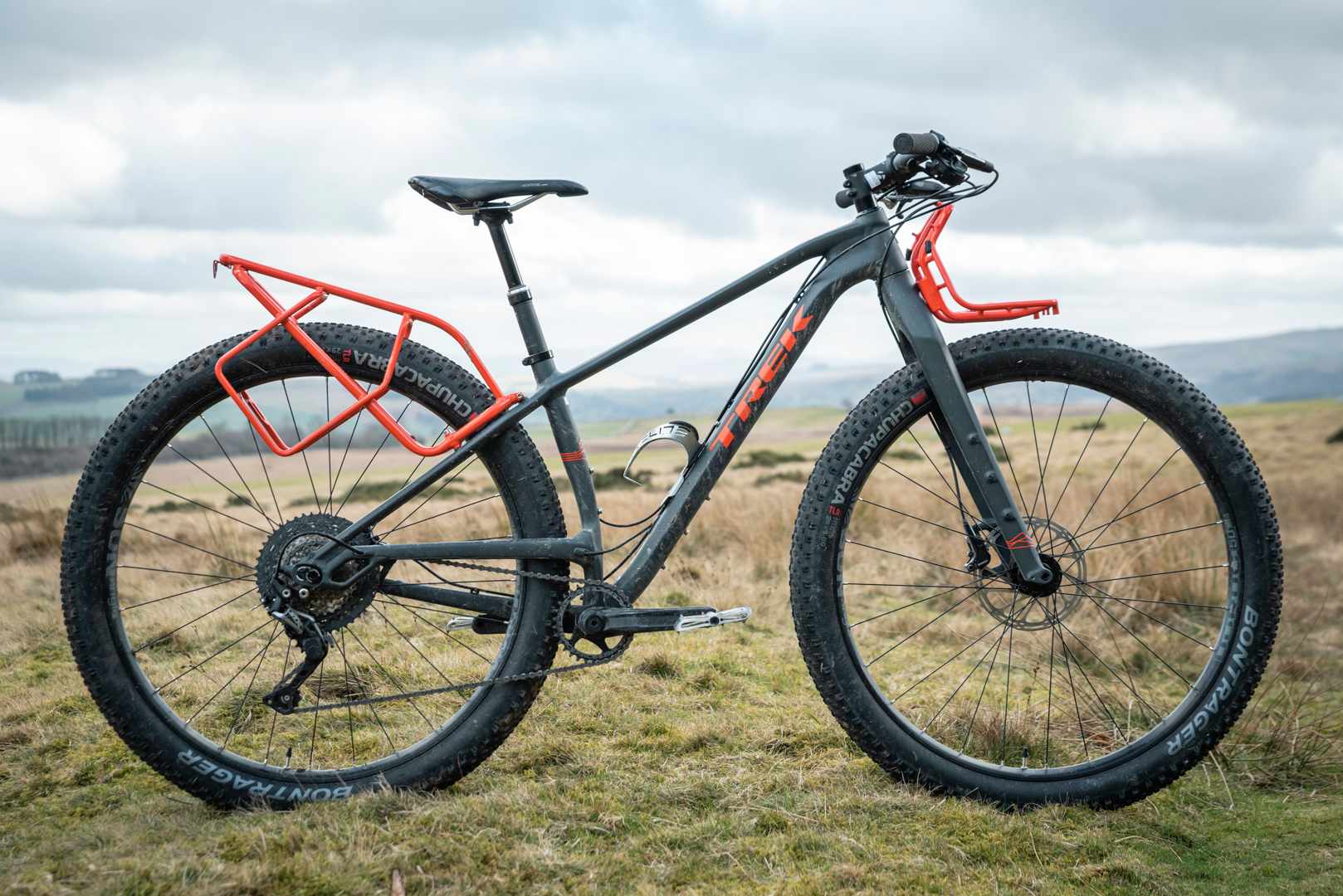
Trek’s success with the Stache has given it the confidence to introduce more 29+ bikes into their line-up. The Trek 1120 fuses the Stache with one of Trek’s burly tourers, with a product that will either have you planning an adventure, or uttering a sigh of resignation and quickly flicking to the next article. Assuming you’re still here, let’s take a closer look.
The Trek 1120 has an alloy frame, hydroformed in an angular ‘I can’t believe it’s not carbon’ style. Plugged into the head tube is a rigid carbon fork with an aluminium steerer and crown, and the front rack attaches to this via four M6 bolts. The fork legs also feature three-bolt mounts for cargo cages such as Salsa’s Anything Cage.
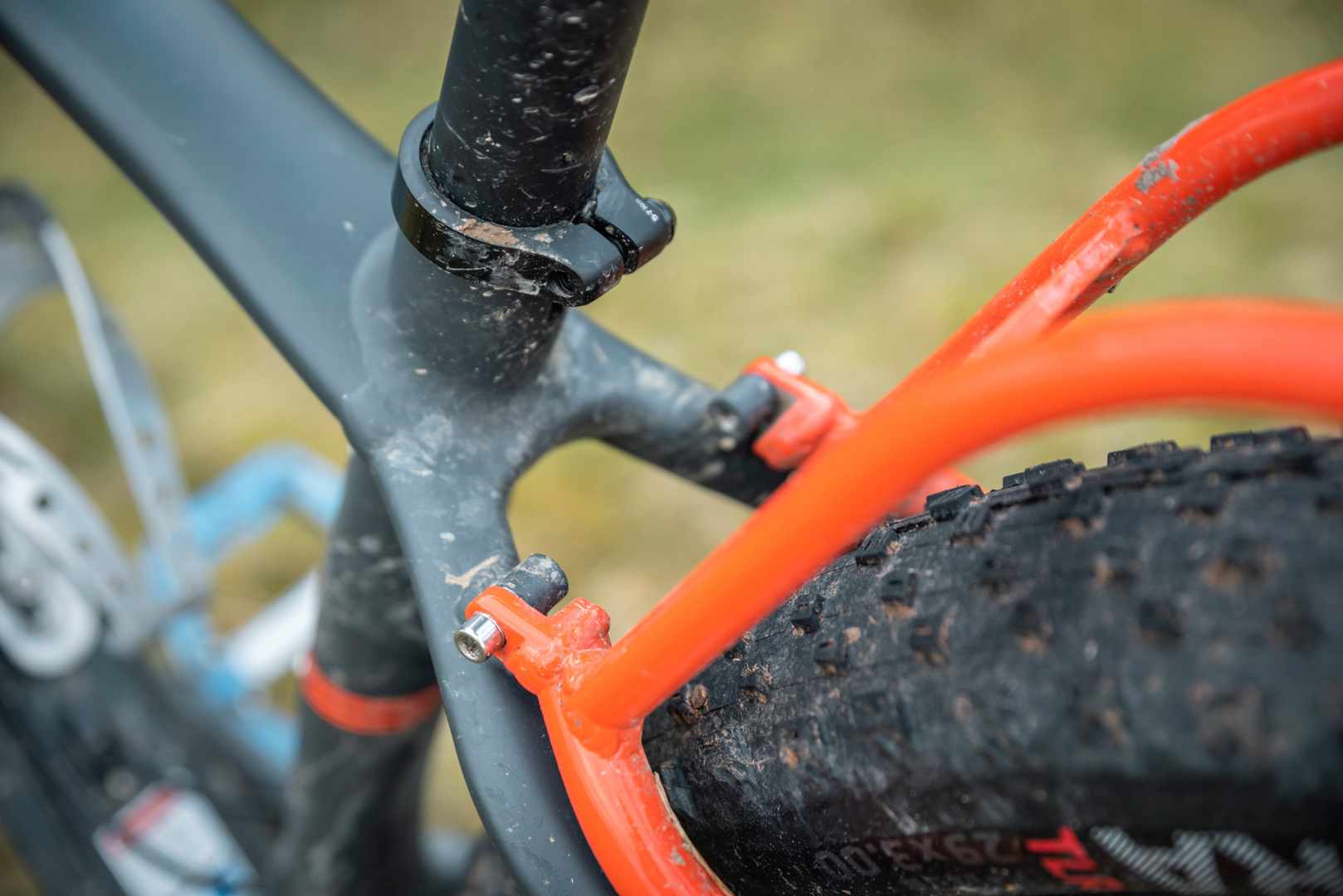
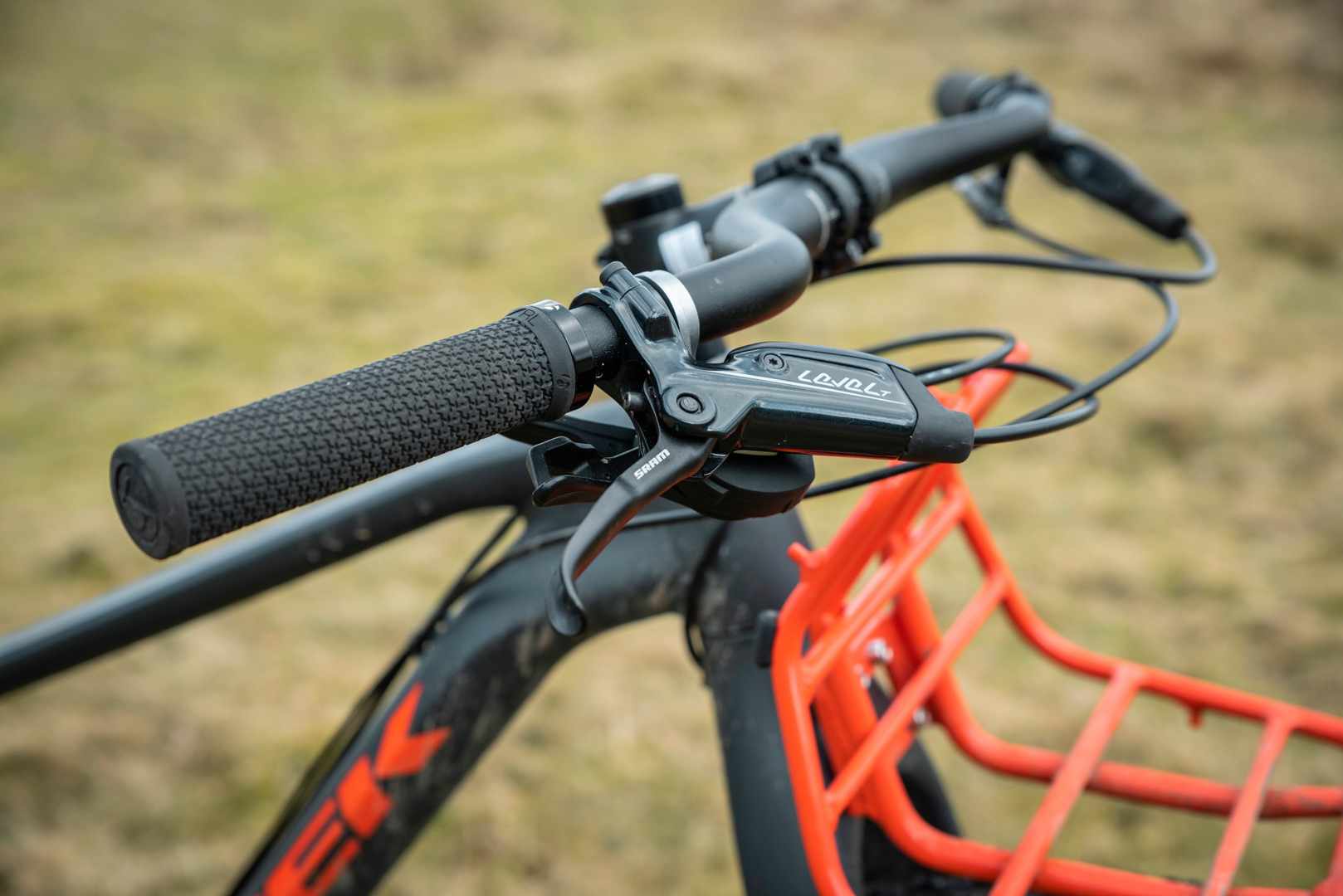
The frame’s front triangle has two more sets of three-bolt cage mounts (which also work with regular bottle cages) and a two-bolt mount in the seat tube for good measure.
The rear rack attaches relatively near the top of the seatstays, although there are additional mounts for a regular rack near the dropouts. There are also fixings for mudguards, if you can find any with enough tyre clearance.
The frame bosses take a mix of M6 and M5 bolts, which should be relatively easy to find replacements for. However, it would be nice if the bolts were all the same thread – this would enable you to cannibalise a replacement from elsewhere on the bike if you lost one on the trail.
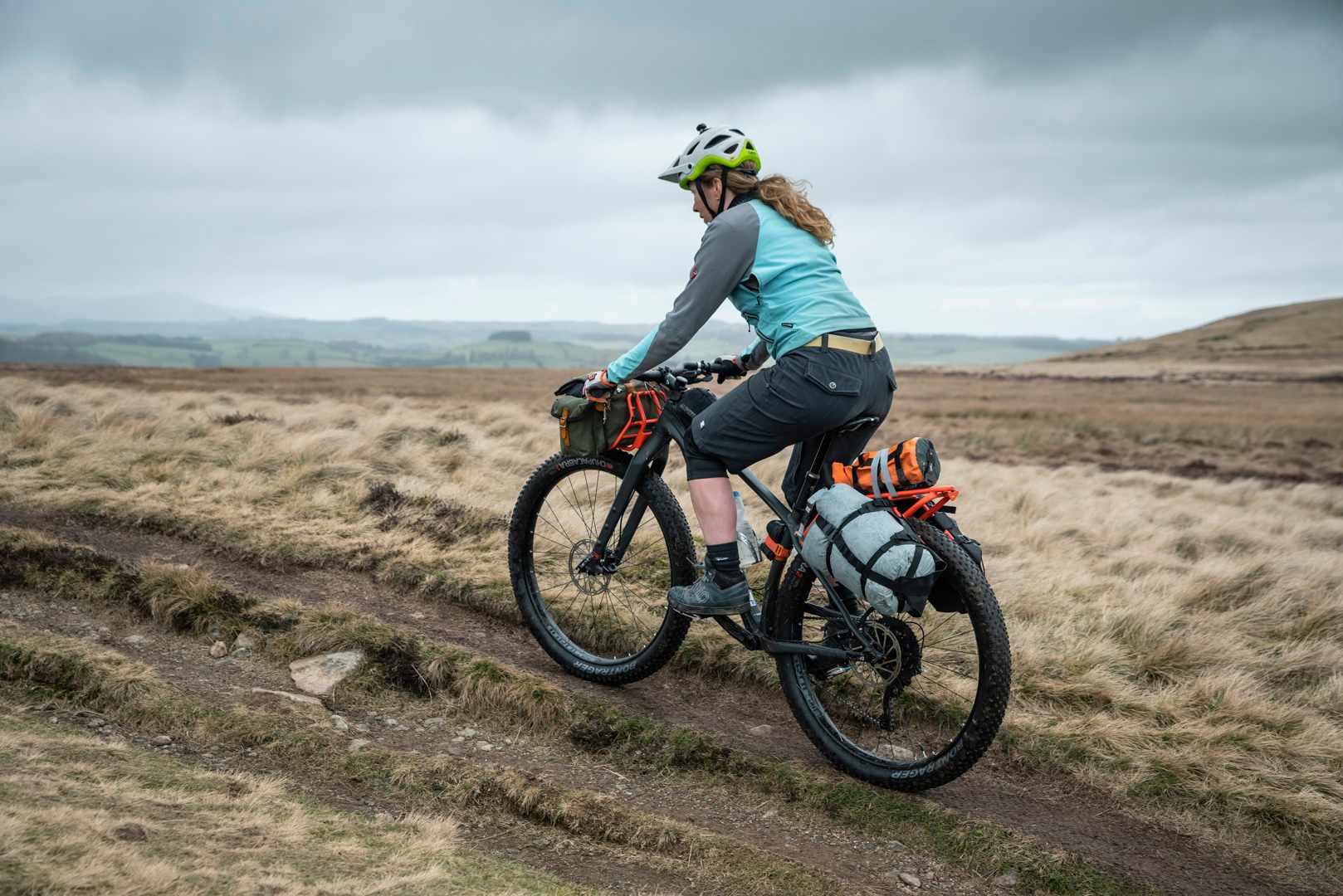
The L-shaped front rack is rated to 7kg and designed to take bulky items in a dry bag, but I also found a large Carradice saddlebag mounted up nicely. There are some metal nubbins on the rear of the rack that help locate luggage straps, and two rubber bumpers on the sides that may or may not save your frame’s downtube in the event of a hard crash.
The rear rack is rated to 15kg, and works in tandem with two specially designed holsters, which are included with the bike. These are made from a tough rubberised material, and hold a medium-sized dry bag. Webbing straps loop around the back of the rack and secure using aluminium hooks. There’s a large range of adjustment, and the holsters are designed so that the weight sits lower than conventional panniers, while keeping plenty of heel clearance. You can also strap additional gear to the top of the rack, which tilts forward slightly to keep everything secure.
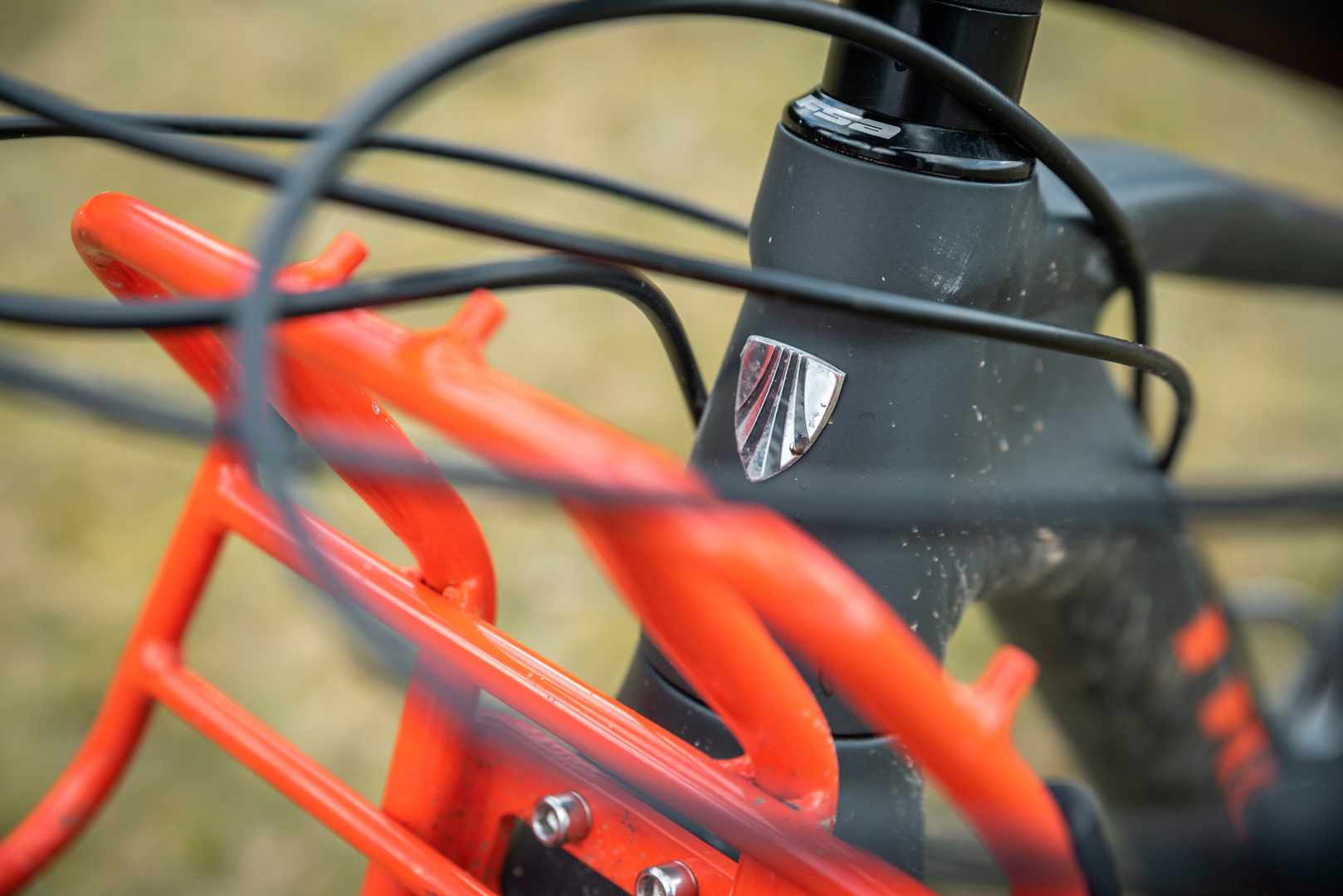
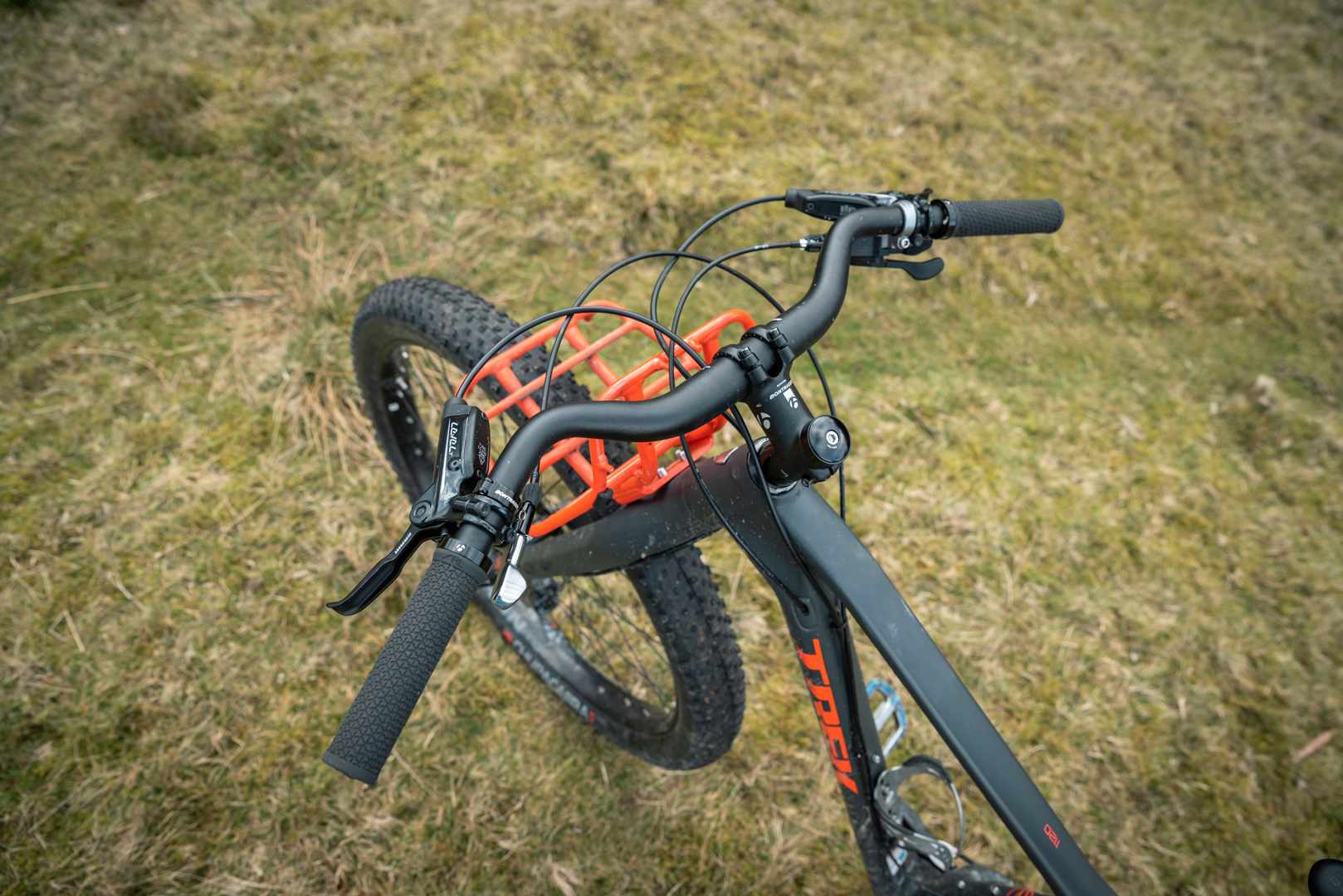
The racks feel reassuringly overbuilt. The do add around a kilo to the weight of the bike, but they’re easy to remove for unladen riding. The fork and front rack are also available separately if you want to mule up your existing bike.
While it would be easy to describe the 1120 as a Stache with racks, the frame has had a few tweaks too. The head and seat angle are steeper, the BB is lower and the chainstays are longer (although they’re still on the short side for a tourer). The sliding dropouts allow you to adjust the wheelbase by 20mm or so, which could be useful if you want a more stable feel, or even to run the bike singlespeed.
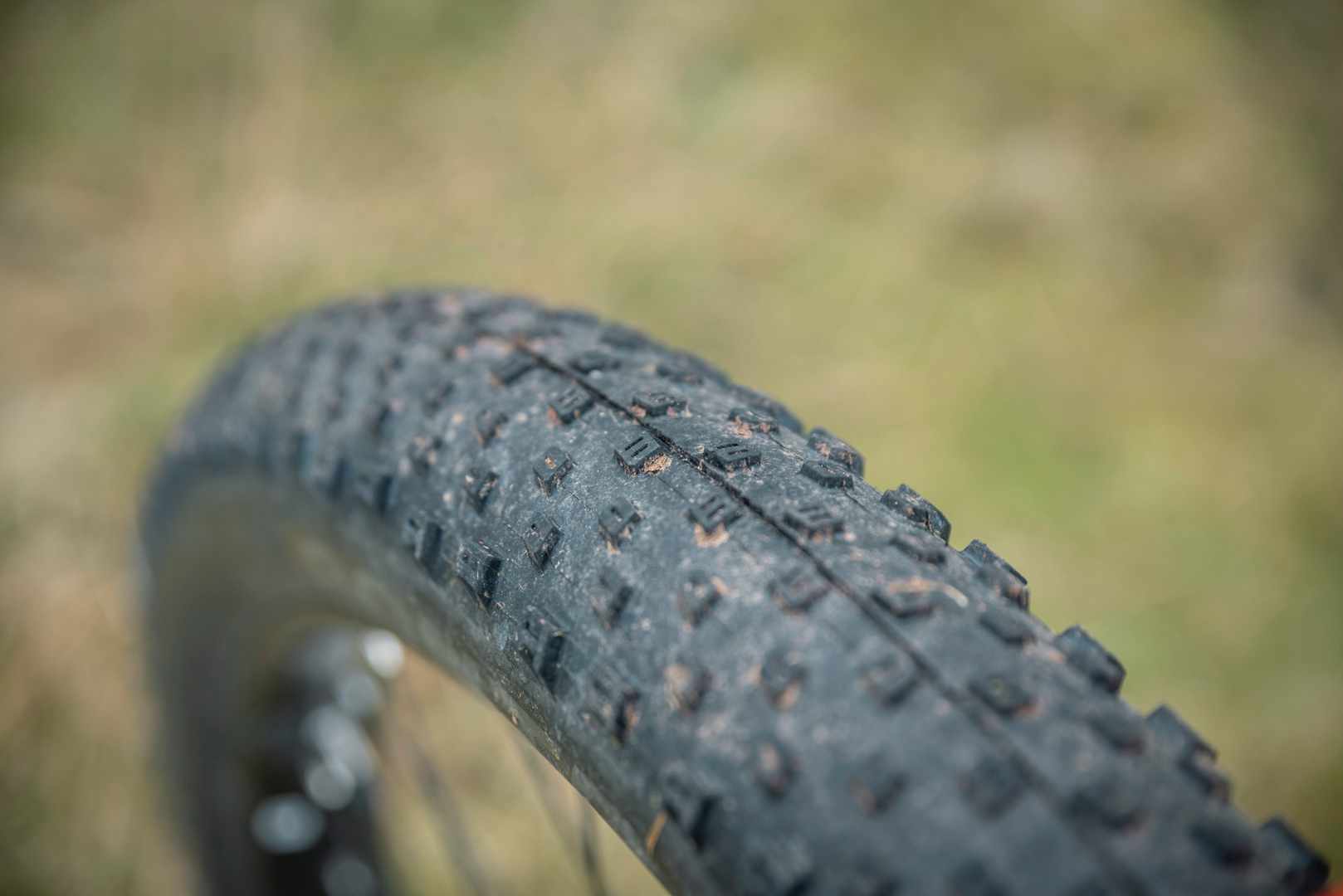
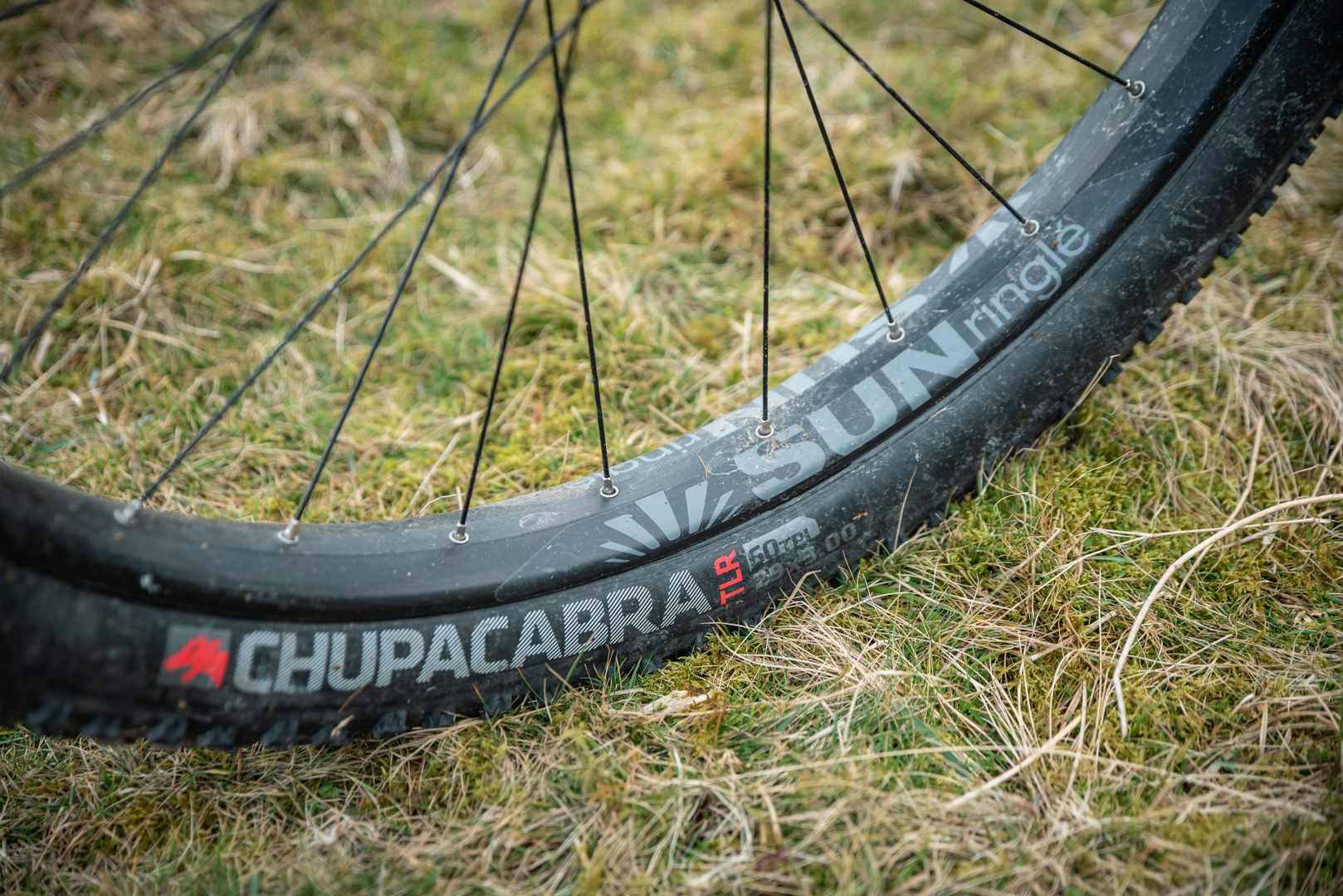
The 29x3in Bontrager Chupacabra tyres may look like the sort of thing that CERN fires particles around, but they weigh in at under a kilo each and are tubeless-ready. They’re mounted on tubeless-compatible 48mm SUNRinglé Düroc rims laced to own-brand cartridge bearing hubs: all fairly sensible parts, although I’d politely question the decision to go with 28-spoke wheels on a bike that’s designed to be an ultra-reliable load carrier.
Elsewhere on the frame there’s a sensible mix of internal and external cable routing, and a kinked downtube should you wish to fit a suspension fork. The 1120 also comes with a 125mm Bontrager Drop Line post as standard. We’ve had some issues with the durability of Bontrager’s droppers in the past, and regular maintenance is advised, although it does have straightforward cable-operated internals and a nice solid lever.
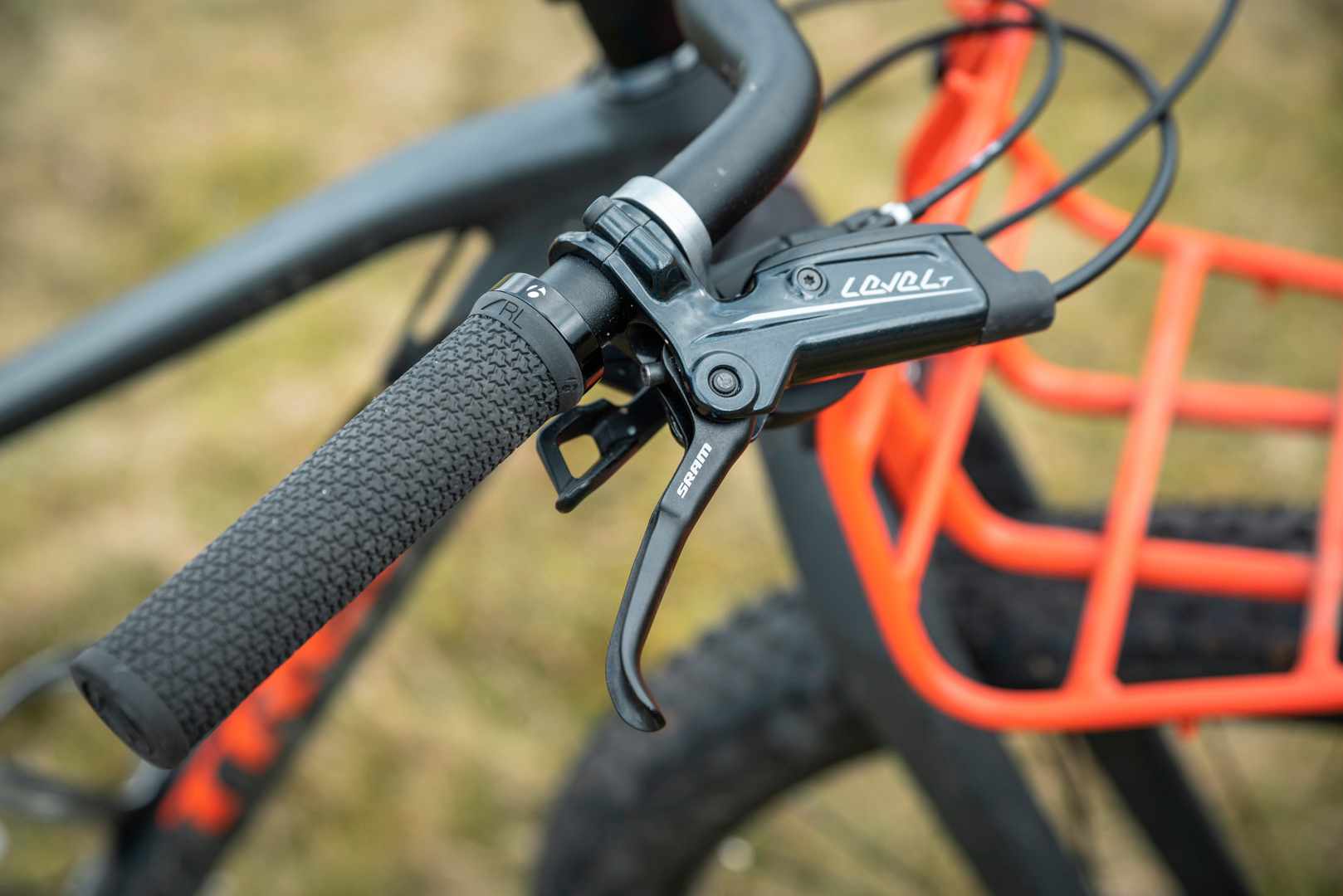
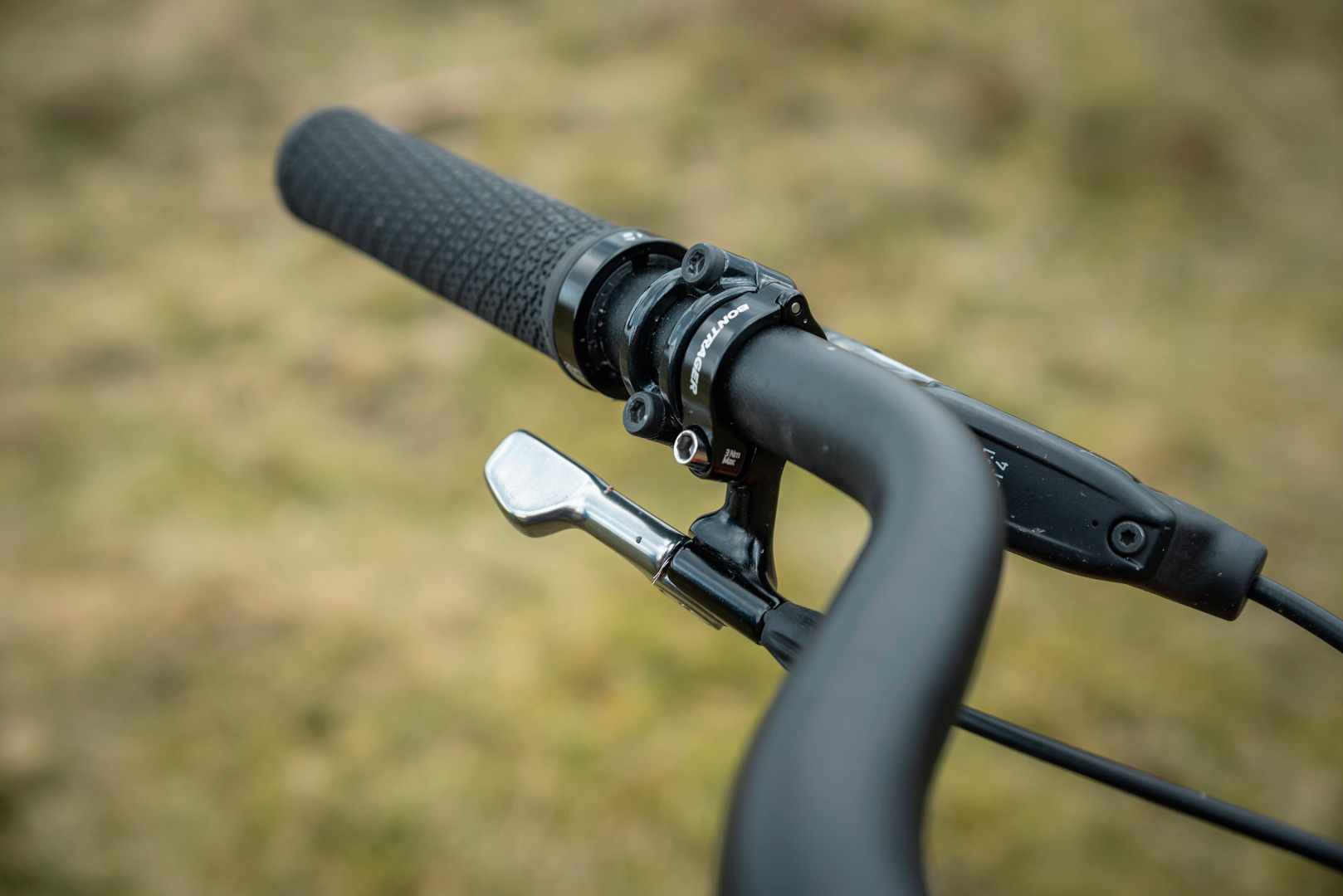
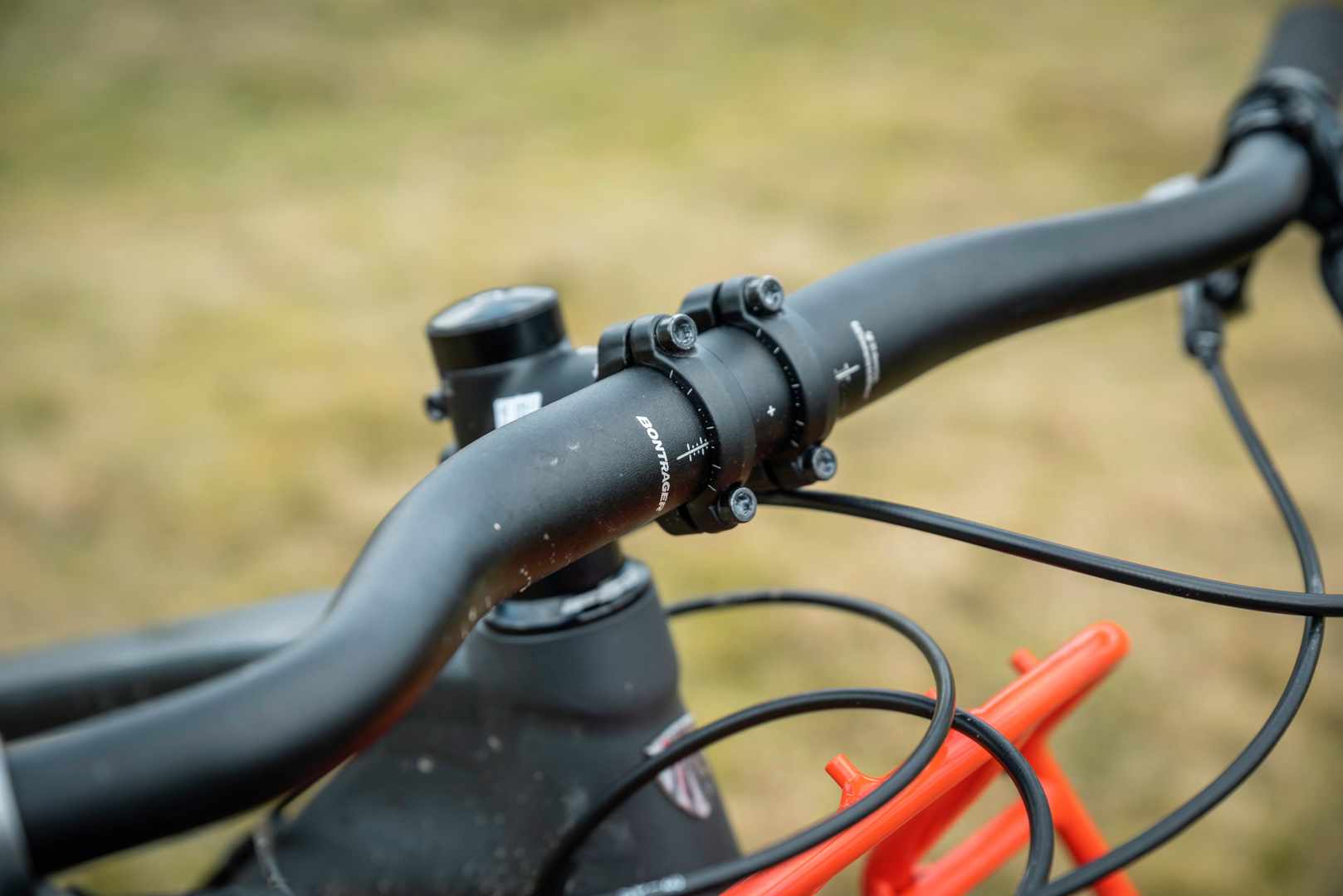
The controls are attached to a fairly narrow set of Bontrager Crivitz handlebars, which have a swept-back shape that encourages a relaxed upright riding position. Unusually for this day and age when bikes seem to come with components from one stable, Trek has specced a Shimano SLX cassette and shifter, a Race Face crank and SRAM brakes. The drivetrain offers a 30T x 46T bottom gear, which should be low enough for most riders. Trek has also opted for a press-fit bottom bracket and although ours was trouble-free, aspiring world travellers may want to look at a conversion option.
The Ride
The Trek 1120 is primarily designed to be ridden laden, and it really excels at this. The front rack holds a decent load securely, well out of the way of your precious crushable brake hoses, with minimal effect on the bike’s handling. One decent strap is enough to keep a well-stuffed dry bag in place, and the sizing of the platform is just right to hold a winter sleeping bag, a roll mat, or a similar light but bulky payload.
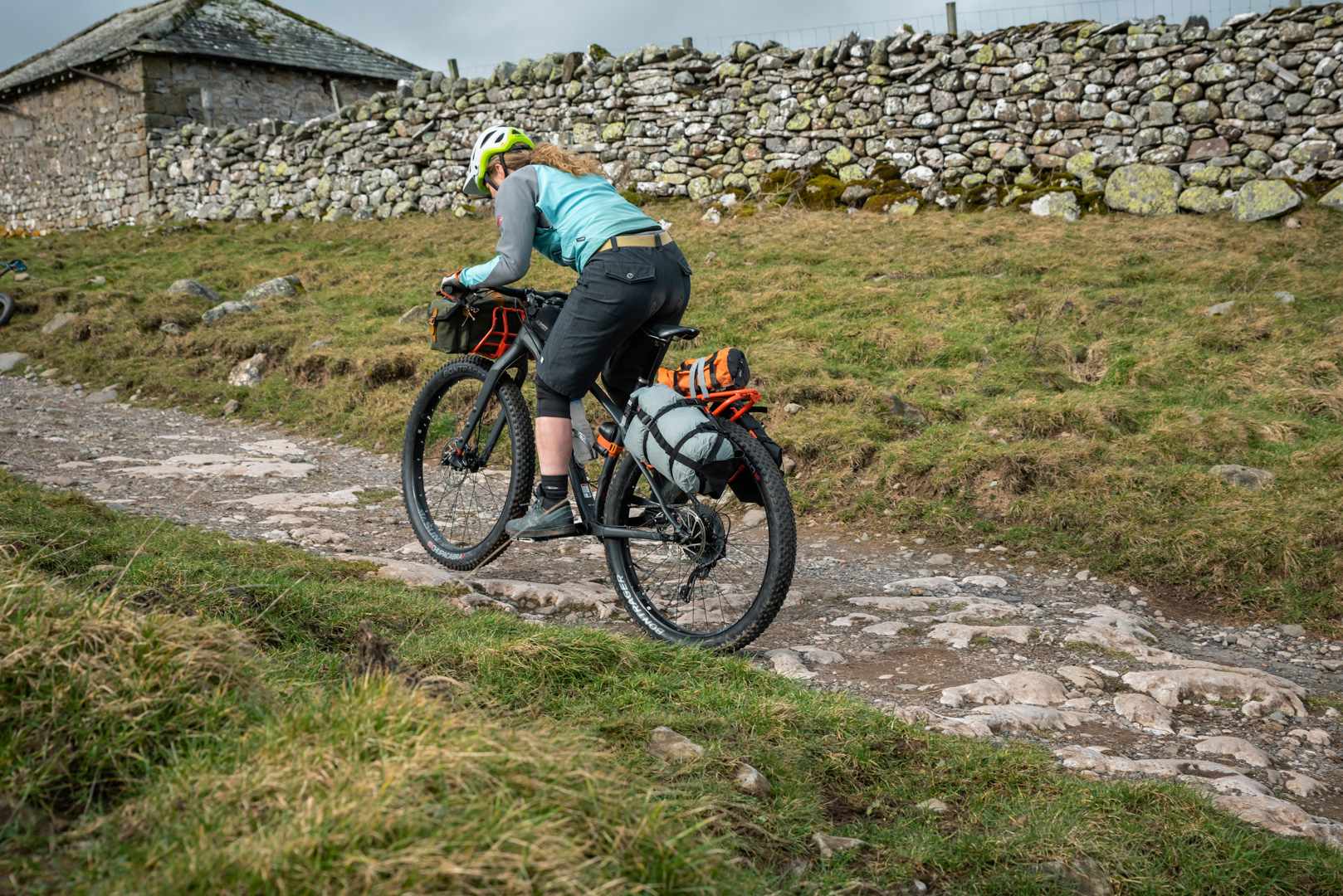
The rear luggage harnesses are a bit more fiddly to use and adjust, but very secure. I did have one dry bag that made an escape attempt, but that was due to poor packing rather than any failure of the harness design. The hooked clips are quick to undo if you need to get to your gear on the go, and the range of adjustment gives the system enough capacity for longer trips as well as overnighters. The rest of the bike is also well thought out from the load-carrying point of view, thanks to details like the under-downtube cage mounts and the flattened top tube that makes a pleasingly stable platform for a bag.
With the ability to distribute weight between the front and the rear of the bike, the ability to get the saddle out of the way on the downs, and the absence of worry that you’re going to lose your sleeping back half way through a great descent, the 1120 is about as enjoyable to ride loaded as mountain bikes get. At slightly north of 30lbs, it isn’t a particularly heavy bike, but it also rides light thanks to the rigid fork and fast-rolling tyres. Chupacabras are about as good as a low profile plus tyres get, and even with inner tubes fitted they have a good turn of speed, but that extra 1.5 inches also seems to bestow them with better traction and cornering grip than an equivalent 27.5+ tyre. There isn’t a huge range of 29+ tyres to choose from, but more aggressive options are also available, such as the new Maxxis Minion 29x3in or Bontrager’s own 29+ XR2.
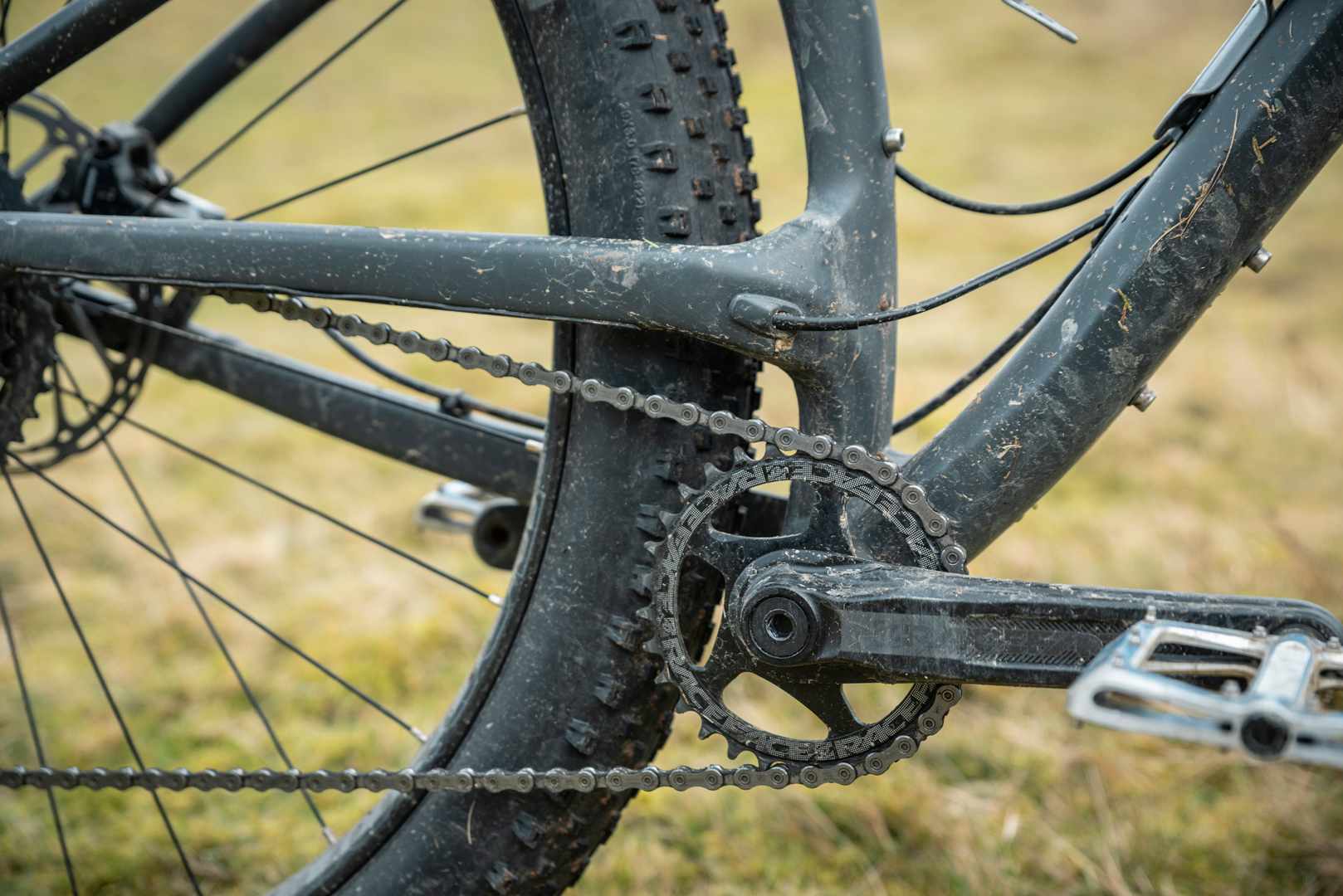
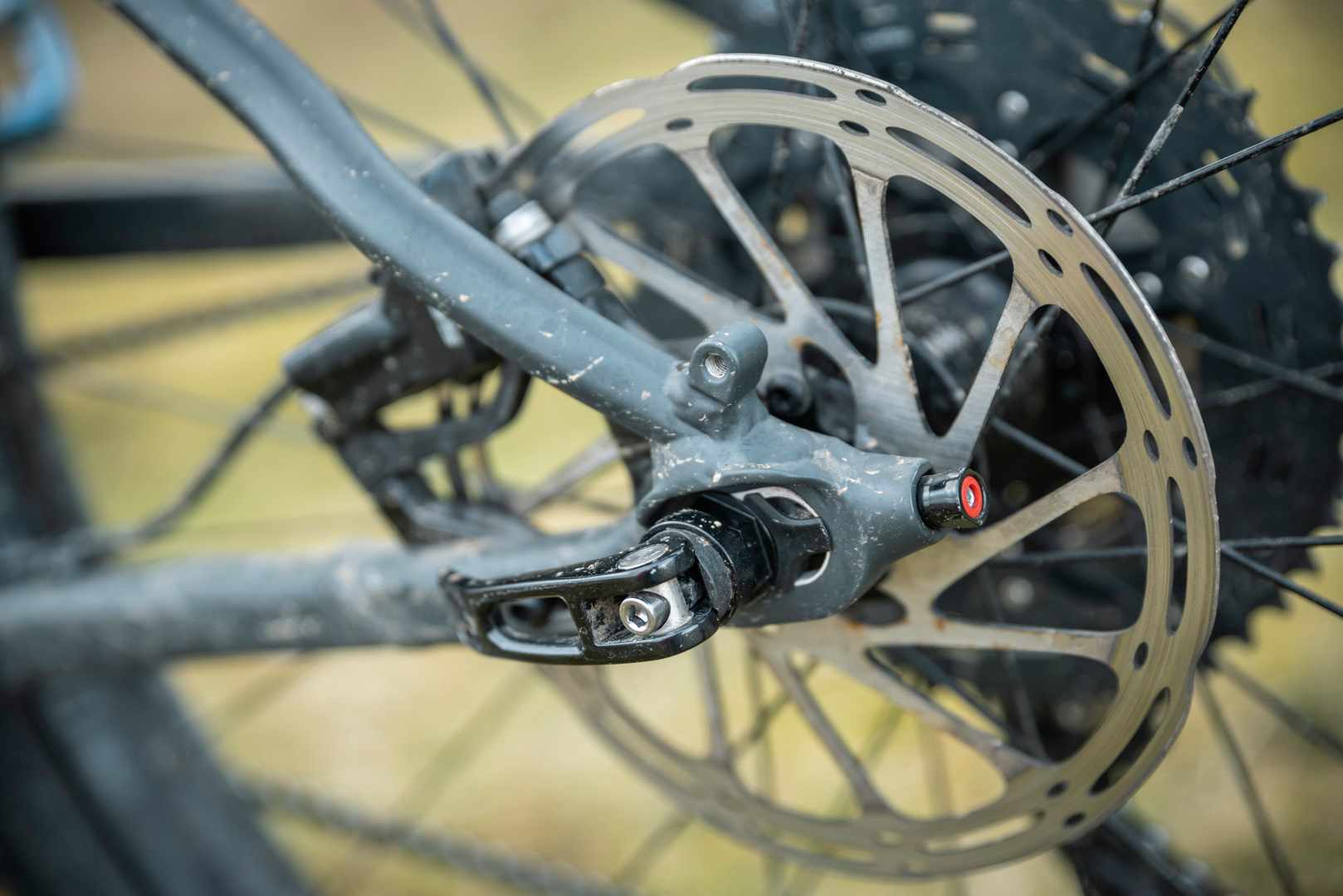
As well as playing brilliantly with baggage, the 1120 is fun and responsive, with a ride character worlds away from the all-flattening trail juggernaut feel of a full-blown fat bike. The short back end means that it’s easy to pick the front up even with a load on board, and sudden direction changes and tricky lines are there for the taking. The bike arrived at the Singletrack office just before a decent dump of snow, and it revelled in the white stuff. This was thanks in part to using the front rack to carry my gear – the extra weight directly over the front wheel seemed to help the tracking in soft conditions.
With a slightly limited gear range for its big wheels, the 1120’s climbing ability is adequate but not earth-shattering. Part of the responsibility for this rests with the SLX cassette, which has a rather clunky jump down to its 46-tooth sprocket. While I still like the feel of Shimano shifters and their two-way action, it seems they have some catching up to do now that Eagle is coming stock on so many bikes.
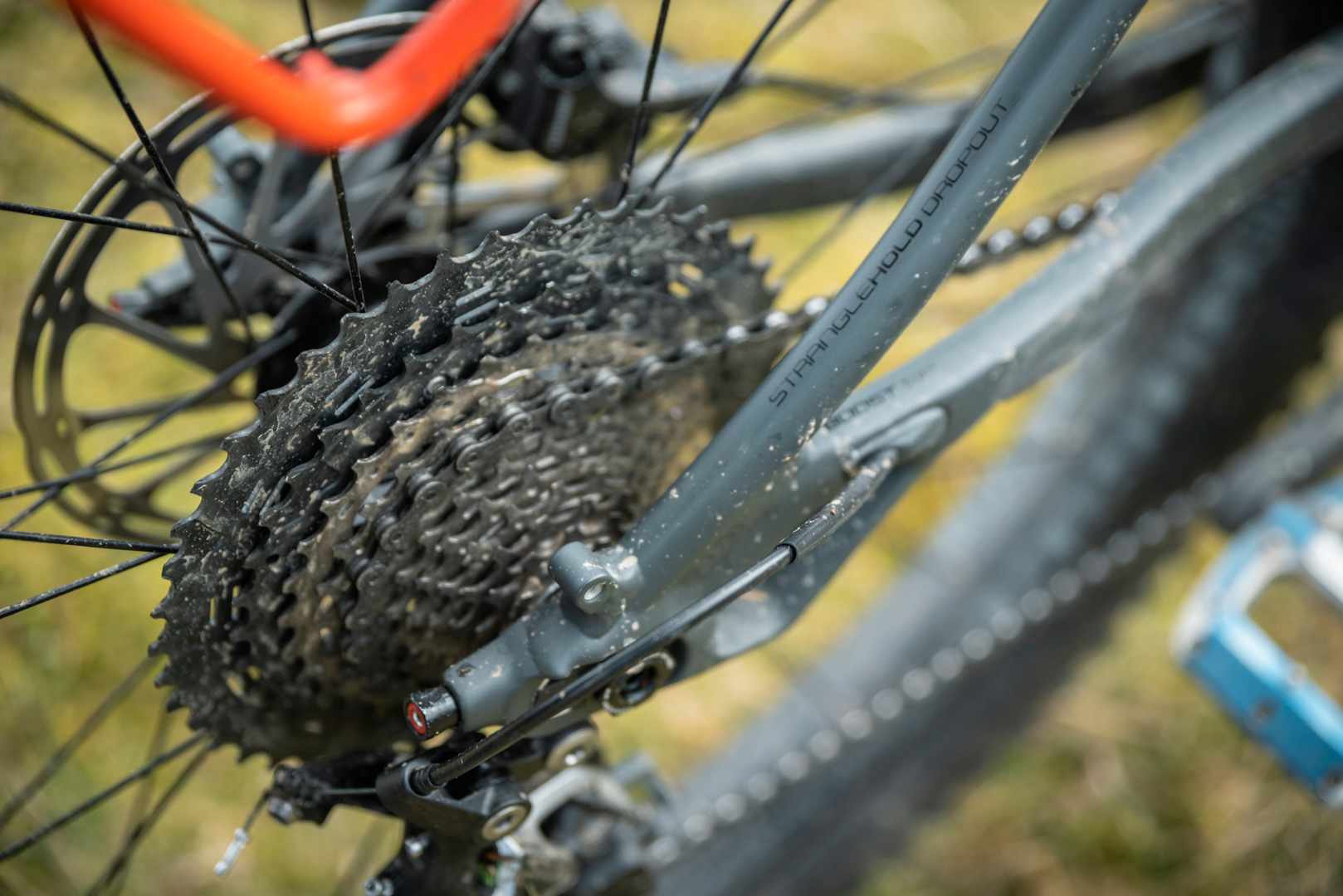
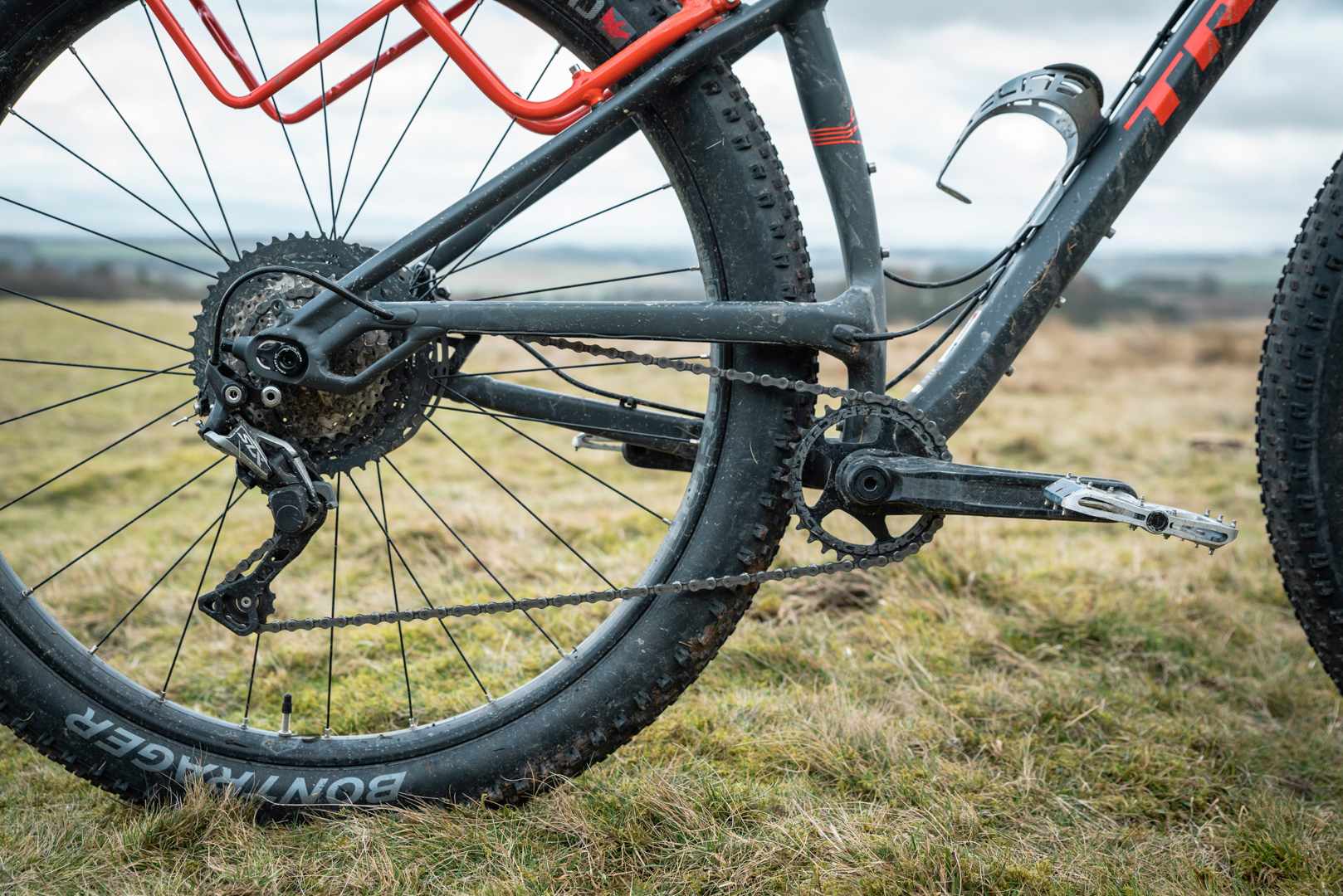
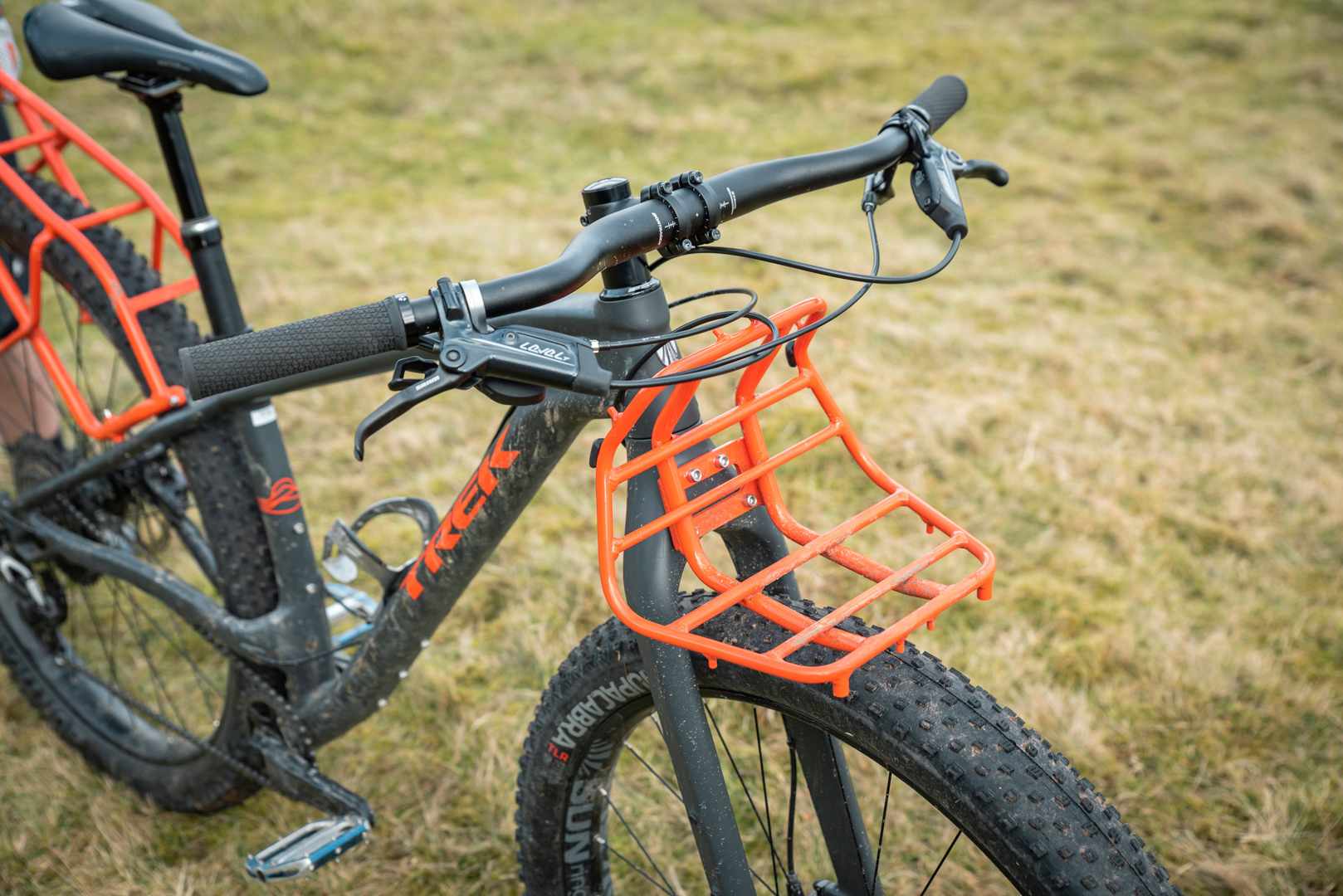
Admittedly, for anyone used to modern trail bikes, the 1120 is going to feel like a bit of a backwards step. It’s short, steep and a bit skittish on anything truly technical. However its huge tyres are supremely confidence-inspiring, and at the right pressure they’ll take most things in their stride. The 685mm bars do hold it back when things get rough, and I’d also question the wisdom of fitting controls that only allow one hand position (albeit a very comfortable one) on a bike that’s designed to be ridden for long miles over successive days. In short, taking the racks off doesn’t turn it into a trail bike, and if you want to primarily ride unladen then you’d be better off looking at a regular Stache.
Aside from the narrow bars, I found some other minor annoyances with the 1120. Its fiddly QR thru-axle system always seemed to be slightly too loose or too tight, and the low-end SRAM Level T brakes lacked feel and tended to rub the rotors. Finding the right tyre pressure with plus bikes can also be a slightly maddening exercise, even with a digital gauge, and there were definitely times where I was erring too much on the side of caution, resulting in a rattly ride.
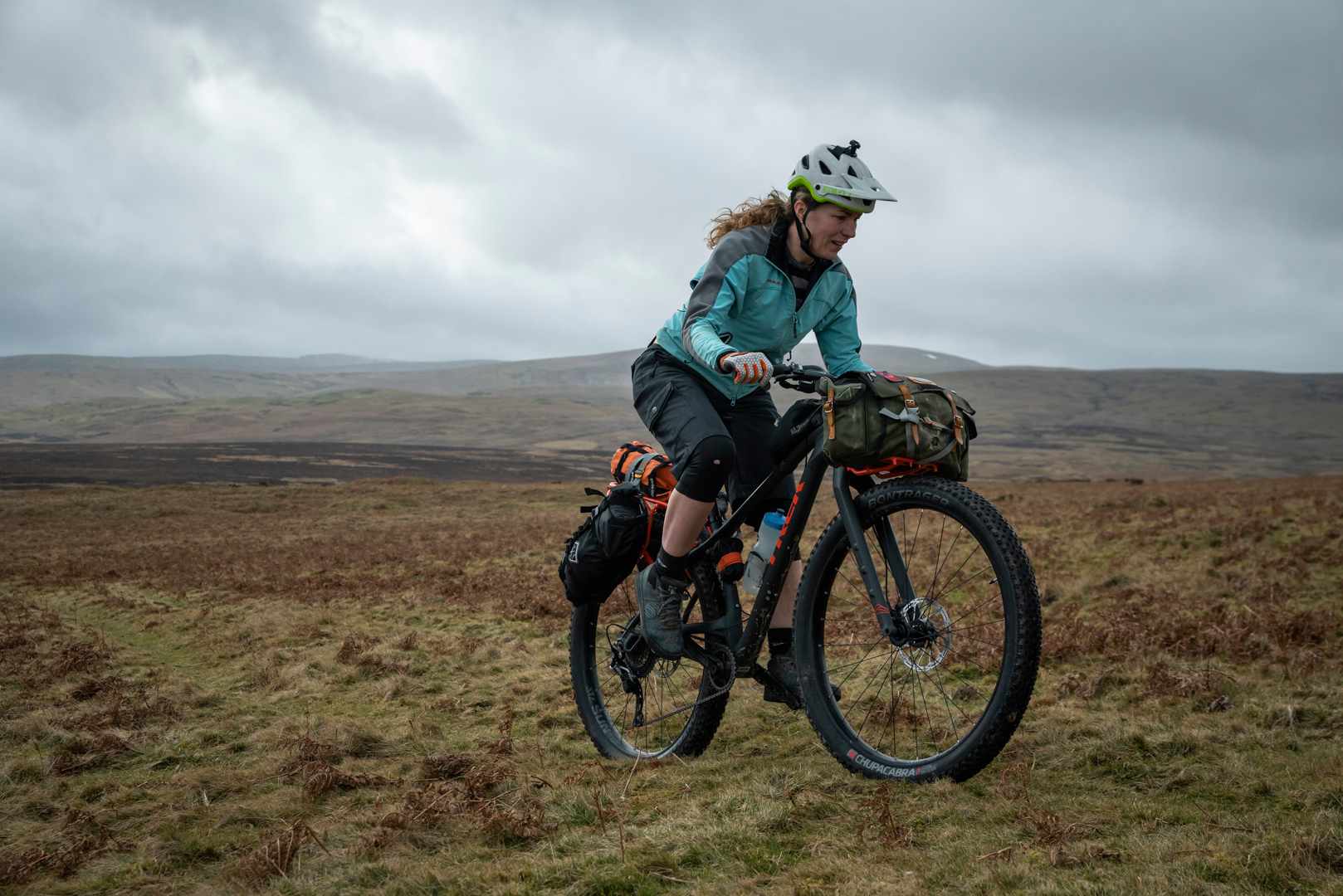
None of these things were enough to spoil the fun with the 1120. While it might have felt a bit outgunned on really lumpy trails, it was still game. Most importantly, the racks work exactly as intended, giving the 1120 the ‘normal bike’ feel of well-packed soft luggage, but with additional security, stability, and no more ruined paint or kinked cables.
Overall
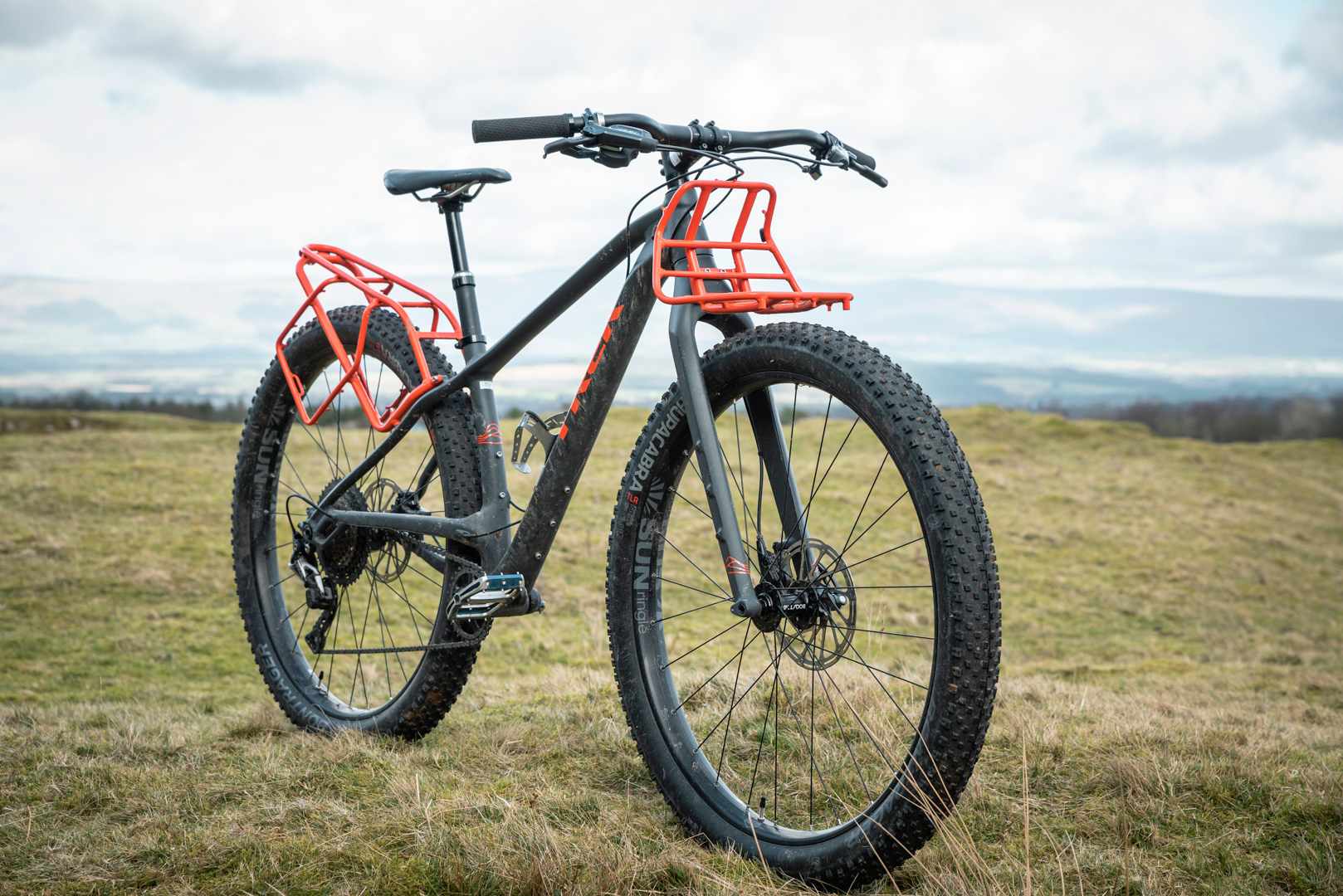
The Trek 1120 is a genuine one-off, and a good example of a big bike company daring to do things differently. Its custom racks work brilliantly – much better than a traditional pannier rack off-road, in fact – and in time I’d expect similar variations on the concept to start appearing from other manufacturers, but for now, it stands alone. While it’s slightly hobbled as a trail bike by its geometry and cockpit, you can still have a bundle of fun on it. Carrying a full load while being able to tackle full-on terrain is the whole point of bikepacking, and this bike makes it incredibly easy.
Trek 1120 Specification
- Frame // Alpha Platinum Aluminium
- Fork // 1120 Adventure HCM Carbon
- Hubs // Bontrager Alloy, 110x15mm front & 148x12mm rear
- Rims // SUNringlé //ACCENT// Düroc//ACCENT// 50 SL 28-hole
- Tyres // Bontrager Chupacabra, Tubeless Ready, 29×3.00in
- Chainset // Race Face Aeffect, 30T Direct Mount Narrow Wide
- Rear Mech // Shimano SLX M7000, Shadow Plus
- Shifters // Shimano SLX M7000, 11-speed
- Cassette // Shimano SLX M7000, 11-46, 11-speed
- Brakes // SRAM Level T hydraulic disc
- Stem // Bontrager Elite, 31.8 mm
- Bars // Bontrager Crivitz, 31.8 mm
- Grips // Bontrager Race Lite, lock-on
- Seatpost // Bontrager Drop Line 125 (100 on 15.5in size)
- Saddle // Bontrager Montrose Comp
- Size Tested // 17.5 in
- Sizes available // 15.5, 17.5, 19.5, 21.5
- Claimed Weight // 14.17kg/31.24lbs




Is the 3″ tyre the maximum this frame will take or is there room for a bit bigger?
Out of all of this niche W*nk I strangely covet that bike. I have no idea why..
Bontrager Chupacabra’s = dentist/doctors bill.
@jobro – I haven’t eyeballed a set of 29×3.25″ tyres so I don’t know how much bigger they measure up in the flesh. I did try the bike with tougher, grippier tyres but I didn’t feel like the trade-off in weight and rolling resistance was worth it, particularly with a load on board.